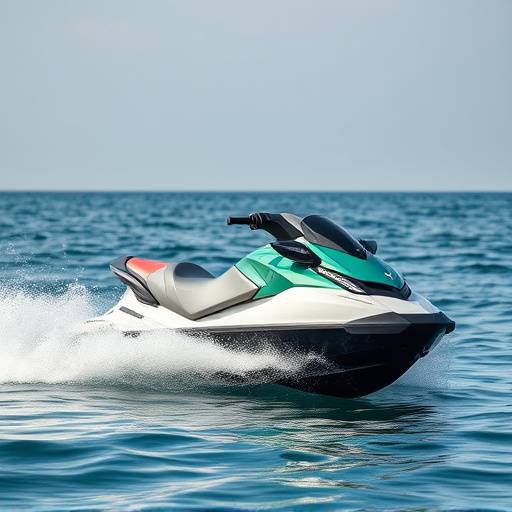Understanding your boat's power needs is crucial for a safe and smooth sailing experience. Choose the right battery (lead-acid, gel, or lithium) based on amp hour (Ah) rating for extended voyages. Regularly clean corrosion from terminals to maintain connection efficiency. Use smart chargers for automated, efficient charging and avoid overcharging. Monitor voltage (12.6-12.8 volts) with a multimeter to prevent damage. Store batteries in cool, dry places, avoiding direct sunlight and extremes.
Maintaining your boat’s battery is crucial for safe sailing and ensuring your vessel is always ready to set sail. In this article, we delve into seven essential marine battery charging tips designed to enhance safety and extend the life of your boat battery. From understanding specific battery requirements to proper storage techniques, these guidelines are tailored to keep your boat’s power source in peak condition.
- Understand Your Boat Battery Requirements
- Regularly Clean Corrosion from Terminals
- Use a Smart Charger for Efficient Charging
- Avoid Overcharging to Extend Battery Life
- Maintain Optimal Voltage Levels
- Store Batteries Properly When Not in Use
Understand Your Boat Battery Requirements

Before you set sail, it’s crucial to understand your boat battery requirements. Different types of boats, from small recreational vessels to larger yachts, have varying power needs. Your battery type—whether it’s lead-acid, gel, or lithium—will dictate charging methods and rates. Knowing the amp hour (Ah) rating of your boat battery is essential; this number indicates how much energy the battery can store. Higher Ah ratings mean more power for longer runs, so adjust your charging strategy accordingly to ensure optimal performance and safety while out at sea.
Regularly Clean Corrosion from Terminals

Regular cleaning of corrosion from boat battery terminals is an essential maintenance practice that can significantly enhance safety and performance. Corrosion buildup over time can cause poor electrical connections, leading to reduced charging efficiency and even potential hazards aboard your vessel. It’s recommended to use a mixture of baking soda and water to gently scrub away corrosion. This simple yet effective method not only improves the contact between the terminal and the battery but also prevents short circuits and other electrical issues.
By keeping your boat battery terminals free from corrosion, you ensure optimal charging, prolong the lifespan of your marine battery, and maintain the overall health of your vessel’s electrical system. Regular cleaning is a small task that can offer big benefits, ensuring your boat’s batteries remain reliable and safe to use during your next adventure on the open waters.
Use a Smart Charger for Efficient Charging

Keeping your boat’s battery in top shape is paramount for a smooth sailing experience. One effective strategy is to invest in a smart charger, an indispensable tool for efficient and safe boat battery charging. These chargers use advanced technology to monitor and regulate the charging process, ensuring your battery receives the optimal charge without overcharging or undercharging. By automatically adjusting voltage and current levels, they protect against common issues like corrosion and sulfation, prolonging your boat battery’s lifespan.
A smart charger is especially valuable for boaters who frequently navigate different conditions, as it adapts to varying power demands and weather changes. This technology not only enhances the performance of your battery but also saves you time and effort by eliminating the need for manual intervention during charging.
Avoid Overcharging to Extend Battery Life

Overcharging your marine battery can lead to significant damage, so it’s crucial to understand and avoid this common mistake. Boat batteries are designed with a specific voltage range, typically between 12.6 and 12.8 volts for a fully charged battery. Exceeding this range, even briefly, can cause excess strain on the battery cells, leading to premature degradation. To prevent overcharging, invest in a quality marine battery charger that automatically regulates the charging process. These chargers cut off power once the battery reaches its optimal voltage, ensuring it doesn’t remain plugged in longer than necessary. Regularly checking your boat battery’s voltage with a multimeter is another excellent way to monitor overcharging and maintain its health.
Maintain Optimal Voltage Levels

Maintaining optimal voltage levels is crucial for keeping your boat battery in top condition. Overcharging or undercharging can lead to reduced lifespan, decreased performance, and even safety hazards. Most marine batteries are designed to operate within a specific voltage range—typically between 12.6 and 12.8 volts for a fully charged 12-volt battery. Regularly check your battery’s voltage with a voltmeter, especially after charging or in low light conditions like cloudy days. This simple step ensures you’re providing the right amount of current to your battery, preventing damage and prolonging its life.
To maintain these optimal levels, consider using smart chargers designed for marine batteries. These devices automatically adjust the charging process based on battery voltage, preventing overcharging. Additionally, maintaining a consistent charge routine is essential. Most boat batteries should be kept between 50% and 80% charged at all times, avoiding both deep discharge (below 20%) and frequent complete charging cycles. This gentle care approach guarantees your boat battery remains reliable and safe for years to come.
Store Batteries Properly When Not in Use

Proper storage is essential for maintaining your boat’s battery health, especially when it’s not in use. Store your marine batteries in a cool, dry, and well-ventilated area, away from direct sunlight and extreme temperatures. This prevents corrosion buildup on terminals, which can reduce battery life. Ensure the batteries are secured to avoid shifting or movement that might cause damage or short circuits. Use protective covers if necessary to shield them from dust and debris.
When storing for an extended period, consider using a marine battery tender or maintainer to keep the battery charged at an optimal level. This is crucial because fully discharged boat batteries can suffer permanent damage, leading to reduced capacity and performance when you need them most. By storing your batteries properly and maintaining their charge, you ensure they’re always ready for action whenever you hit the open waters.
Properly maintaining your marine battery through regular cleaning, efficient charging with a smart charger, avoiding overcharging, and adhering to optimal voltage levels can significantly extend its lifespan. Additionally, storing batteries correctly when not in use ensures they stay in top condition for years to come. Remember, prioritizing these simple yet effective tips is key to keeping your boat’s battery safe and reliable.
